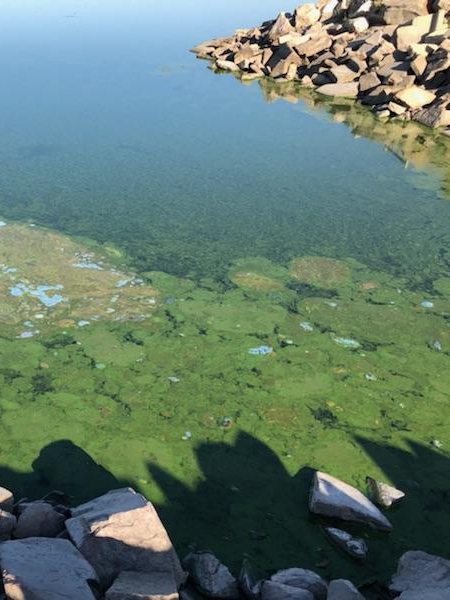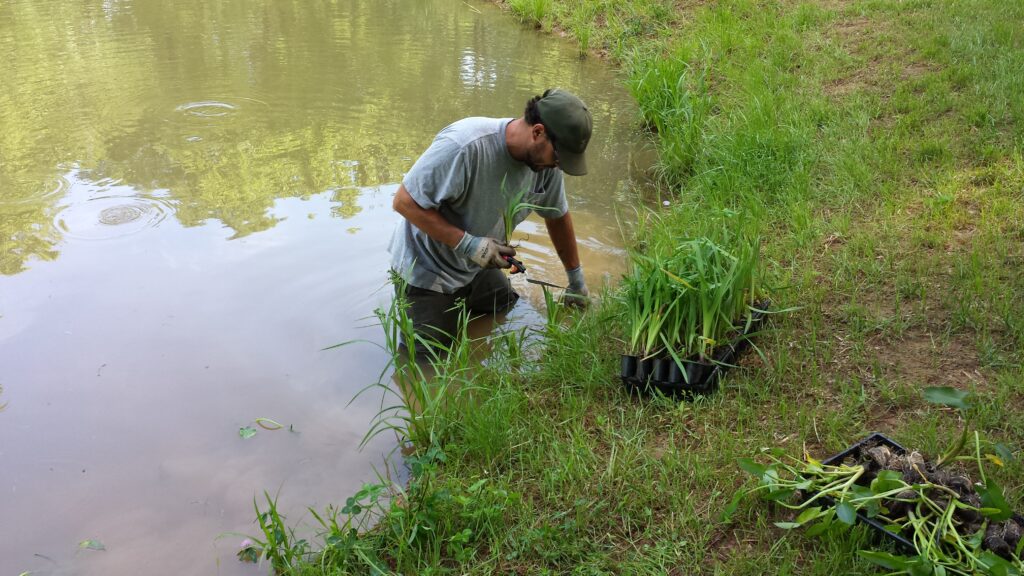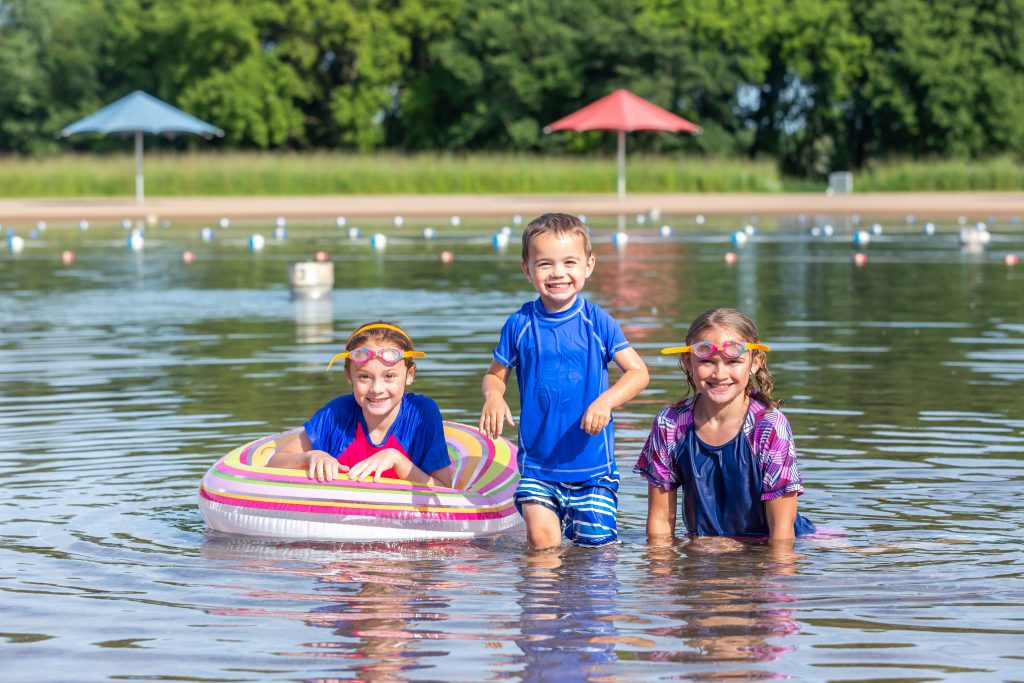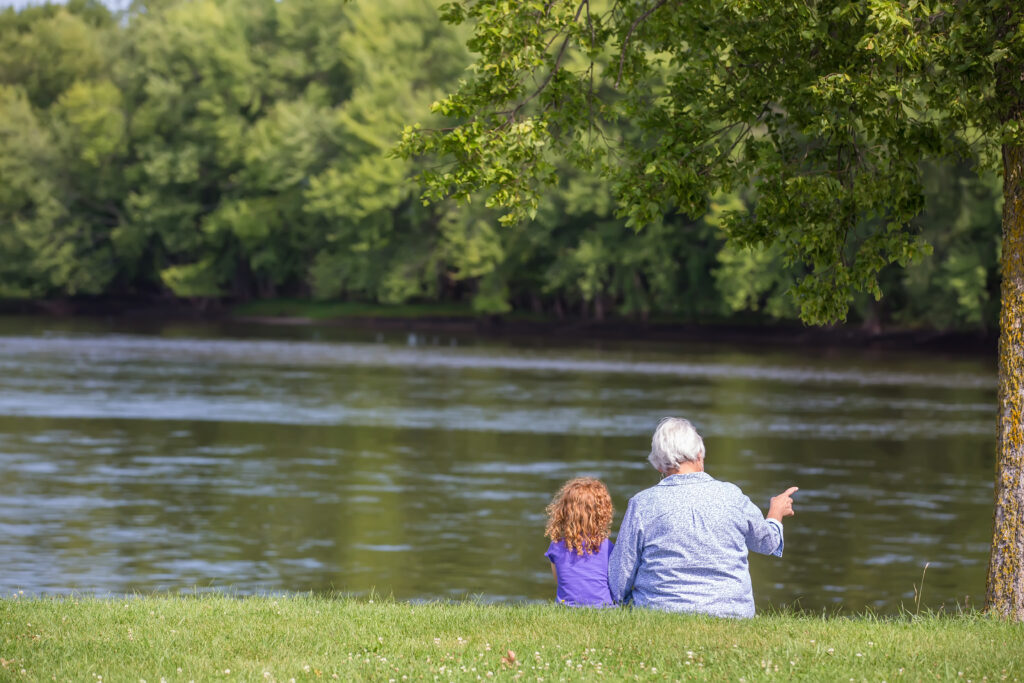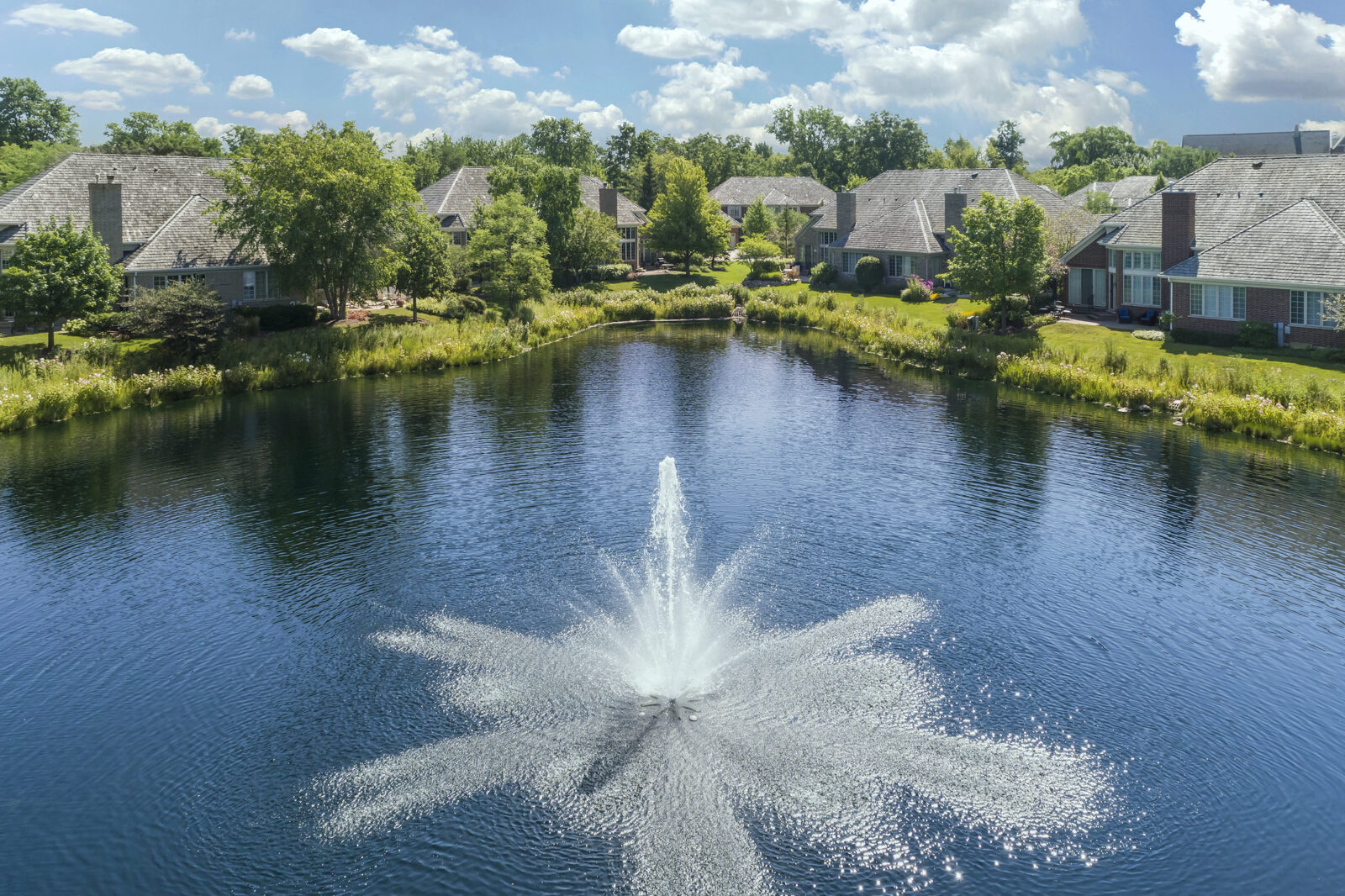
Is Your Pond Safe for Pets and Kids?
We all benefit from time spent around the water. Whether it’s in the form of lakes, ponds, rivers, or even swimming pools, science proves that water instills a sense of peace and tranquillity within each of us. When it comes to lakes and ponds, proper management and safety precautions are required to reap the benefits. Without it, these aquatic ecosystems may become a danger and detriment to children, pets, and other loved ones.
Here are some common questions and safety concerns we receive from property owners and managers, as well as best practices for maintaining a safe environment where people can connect with nature.
Is our pond safe for swimming?
There are some initial visual ways to determine if a pond is safe for swimming. Stakeholders can use basic observatory skills and judgment to identify potential “red flags” of unsafe waters and implement management solutions to improve water quality.
Water color is a good primary indicator of water quality; if it is noticeably different or unusual (i.e. pea soup-looking), there may be an issue. Although green water may indicate an algae bloom, not all algae are green and some can produce harmful toxins that are fatal to fish and dogs and cause serious illness. Science also suggests a connection between algal toxins and the development of neurodegenerative diseases.
Identifying Toxic Algae
Harmful Algal Blooms such as cyanobacteria (blue-green algae) can appear in parallel streaks or clumped dots. Other blooms may look like oily blue, red, gold, or white paint. Algal toxins can also produce foul odors and taste compounds in drinking water. These and other signs indicate that the waterbody may be unfit for use and require professional water quality tests and management.
Ultimately, the most reliable approach for validating safe water is periodic water quality analysis. Professional water quality experts can identify problematic conditions, such as poor dissolved oxygen levels or imbalanced pH, and implement maintenance strategies to keep it safe for recreation at all times.
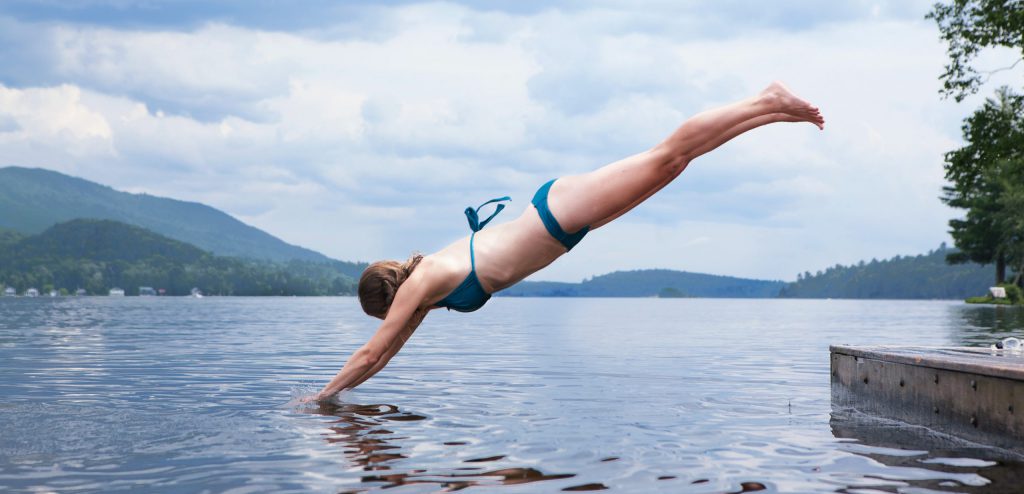
Is recreation safe in deep water?
Deep water can be beneficial in ponds. In fact, deeper water is usually desirable. Greater depths are often associated with fewer flooding events, more abundant fish and wildlife, and in some cases, less algae and odor problems. Ponds with greater depth are also deemed “younger,” meaning they shouldn’t require dredging for many years. This is a process of muck and sediment removal that restores an aging pond, but is associated with significant costs and downtime.
Nonetheless, deep water can be dangerous for residents, particularly children. Less visibility in the water column makes it more difficult to recognize underwater hazards like stormwater equipment, tree branches, debris, and even steep drop-offs. Aquatic weeds may also be submersed below the surface. Hydrilla, milfoil, and other nuisance plants have been known to drown swimmers, including experienced athletes.
Best practices like cleaning plant material from kayaks, nets, toys, and water equipment can help prevent the spread of invasive weeds. In severe cases, licensed professionals can apply EPA-registered herbicides designed to target undesirable weeds without impacting people, pets, or native plants and wildlife. Pond weeds are a symptom of underlying water quality imbalances meaning herbicides will not provide a permanent fix, however they are a valuable tool to help quickly and safely eliminate dangerous weed growth. Advanced drone technologies are making applications more efficient and less intrusive in residential areas.
Our shoreline is unstable. How can we fix the erosion damage?
Eroded shorelines can pose many hazards and leave property owners and managers liable if a fall or accident occurs. Installing docks and gazebos around the water is an excellent way to more safely enjoy fishing and nature watching. It’s also beneficial to establish clear, durable paths to the water to prevent people and pets from venturing into unsafe areas. This can be accomplished naturally by introducing beneficial plants like blueflag iris, cardinal flower, and native sedges and rushes. Allowing them to grow at least knee high and several feet out from the shoreline will create a visually-appealing buffer that also stabilizes sediment. If the shoreline has eroded significantly, professional bioengineering solutions may be required to restore stability and aesthetics.
How can I inform waterbody users about potential risks?
It’s important to educate residents on these potential risks, but also, about general water safety. Knowledgeable residents and children are able to make more informed decisions and be more vigilant. It’s essential for community owners and managers to post proper signage around water resources as required for stormwater compliance. Likewise, it’s important to wear life jackets, use sunscreen, avoid diving and running near the water, refrain from swimming past dusk, and make sure a lifeguard or chaperone is always present. If you suspect the water may contain hidden dangers, refrain from recreation until a professional inspection is completed.
Education also includes tips and best practices for the preservation of water resources. Adopting the following best practices can help prevent nutrient pollution and support balanced water quality conditions for years to come.
- Reduce the use of lawn and garden fertilizers
- Bag or compost leaves, grass clippings, and other yard debris
- Properly dispose of trash and pet waste
- Opt for environmentally-friendly, biodegradable detergents and cleaners when washing vehicles and pressure-washing houses
- Maintain landscaping swales with pebbles and rocks to naturally filter water during rainstorms
- Keep stormwater drains free of trash, debris, and other blockages
- Have regular inspections performed by a licensed professional
Maintain Safe Water with Annual Lake Management
Fishing, swimming, kayaking, and boating are some of the highlights of summer and everyone deserves to have peace of mind when spending a day on the water. While good judgment and observation can offer a lot of information about the safety of a pond, responsible maintenance will make the biggest difference. Pond management is most impactful and cost-effective when conducted on a consistent basis. Through a professional Annual Management Program, experts can monitor aquatic conditions, identify potential hazards, and implement nutrient remediation, biological bacteria applications, fountains and aerators, and sediment removal to prevent problems before they occur – so you can focus on making lasting memories with pets and loved ones.
SOLitude Lake Management is a nationwide environmental firm committed to providing sustainable solutions that improve water quality, enhance beauty and preserve natural resources.
SOLitude’s team of aquatic scientists specializes in the development and execution of customized lake, stormwater pond, wetland and fisheries management programs. Services include water quality testing and restoration, algae and aquatic weed control, installation and maintenance of fountains and aeration systems, shoreline erosion control, muck and sediment removal and invasive species management. SOLitude partners with homeowners associations, golf courses, private landowners, businesses and municipalities. SOLitude Lake Management is part of Rentokil, a leading business services company, operating across the United States, Canada and Puerto Rico.
For more information, visit SOLitude Lake Management at solitudelakemanagement.com, and connect on Facebook, LinkedIn and Twitter.









